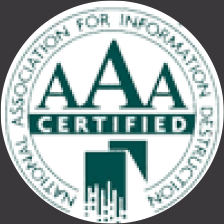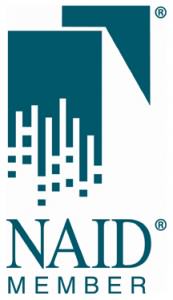
Remote work has become commonplace in modern business operations. While it brings flexibility and convenience, it also introduces new challenges for maintaining data security. Remote employees handle sensitive documents just like in-office staff, but the lack of direct oversight makes data protection more complex.
This guide will explore how to handle shredding for remote employees and best practices to ensure compliance and data security.
Understanding the Risks for Remote Workers
Remote employees manage various types of sensitive data, from financial records to client contracts. Without proper protocols, this data is at risk of being mishandled, lost, or even falling into the wrong hands. Here are three primary risks associated with inadequate shredding practices among remote employees:
Data Breaches
Data breaches pose a significant threat to remote workers and their organizations. Without proper shredding practices, confidential documents can be exposed to unauthorized access, leading to the theft of sensitive information. This can result in financial losses, legal penalties, and irreparable damage to an organization’s reputation.
Hackers and malicious actors often exploit weak points in data disposal methods, making it essential for remote employees to handle physical documents with care. By addressing these vulnerabilities, companies can significantly reduce the risk of data breaches in remote work environments.
Regional Compliance
Different states in the U.S. enforce their own privacy and data protection laws, which often supplement federal regulations. For instance, the California Consumer Privacy Act (CCPA) grants residents of California enhanced rights over their digital information, including what data is collected, the purpose for its collection, and the ability to request its deletion.
Similarly, the Virginia Consumer Data Protection Act (VCDPA) and the Colorado Privacy Act (CPA) include provisions to safeguard consumer data, requiring businesses to implement structured data handling practices. Individuals and organizations must stay informed about these state-specific laws to ensure compliance and avoid penalties.
Outdated Equipment
Ensuring that remote workers have up-to-date equipment is essential for maintaining efficiency, security, and productivity. Organizations should establish regular schedules for software updates, hardware upgrades, and security patches to mitigate risks associated with outdated technology.
Providing remote workers with access to company-approved tools and IT support can also help address technical issues promptly while ensuring compatibility with organizational standards. Clear communication regarding policies for equipment maintenance and upgrade cycles is key to fostering a seamless remote work environment.
10 Best Practices for Handling Shredding in Remote Work
For businesses that hire remote employees, knowing how to handle the unique challenges associated with document disposal can make or break operations.
1. Develop a Remote Shredding Policy
A remote shredding policy is the foundation of secure document disposal. Clearly define what needs to be shredded, how often it should be done, and the tools employees should use. Include specific instructions for different document types, such as financial records, customer data, and internal memos.
2. Provide Approved Shredding Tools
Equip your employees with high-quality shredders that meet your security standards. Look for cross-cut or micro-cut shredders, as they offer higher levels of document destruction compared to strip-cut models. Ensure employees understand the tools’ functionality and limitations.
3. Train Employees on Proper Shredding
Conduct regular training sessions to educate remote employees on shredding best practices. Cover topics such as why shredding is important, the types of documents that require shredding, and how to use their shredders effectively.
4. Establish a Schedule
Encourage employees to establish a routine for shredding documents to prevent sensitive papers from piling up. A bi-weekly or monthly shredding schedule can help maintain consistency and reduce compliance risks.
5. Monitor Compliance
Regularly check that remote employees are following shredding protocols. Provide tools or software that make it easy for employees to confirm compliance, such as reporting their shredding activities or submitting photos of destroyed documents (when appropriate).
6. Secure Collection Points
For employees handling large volumes of sensitive documents, provide secure collection points. This could include lockable shredding bins or collection bags that a shredding vendor can retrieve for bulk destruction.
7. Partner with a Shredding Service
For employees who lack access to shredders, consider partnering with a secure shredding vendor. Mobile shredding services can visit employees’ homes or allow them to drop off documents at a nearby secure location.
8. Document Everything
Maintain detailed records of all shredded documents. This is an essential step for demonstrating compliance during audits or regulatory reviews. Use a standardized form or platform where remote employees can log their shredding activities.
9. Regularly Update the Policy
Remote work environments and regulations evolve over time. Keep your shredding policy up to date by reviewing it at least once a year. Include any new compliance requirements or legal updates to keep your business protected.
10. Conduct Audits
Perform periodic audits to assess the effectiveness of your shredding practices. Use these audits to identify gaps in compliance and areas for improvement. Provide actionable feedback to employees to ensure ongoing adherence to shredding protocols.
Tips to Help Remote Employees Stay Compliant
Here are a few additional tips your team can use to simplify secure document disposal while working remotely:
Provide Clear Visual Guides
Visual aids such as infographics or step-by-step videos can help employees understand exactly what needs to be shredded and how to do it properly.
Encourage Digital Alternatives
Minimize physical paperwork by encouraging the use of secure digital documents. This reduces the volume of sensitive papers that need destruction.
Offer Incentives for Compliance
To motivate employees, consider offering incentives for adhering to shredding policies.
Communicate the “Why” Behind Shredding
Help employees understand the bigger picture by explaining how their actions impact the company’s data security and reputation.
Provide Easy Access to Tools
Ensure all employees have seamless access to shredding equipment or shredding services. If employees feel equipped, they are more likely to stick to the guidelines.
Choosing DIY Versus Professional Services
When it comes to document shredding, businesses must decide between handling it in-house (DIY) or outsourcing to professional shredding services. DIY shredding can be cost-effective for smaller volumes of documents, provided the company already owns a reliable shredder and has trained staff to manage the process efficiently.
However, for larger-scale needs, professional shredding services provide added convenience, ensuring secure disposal with minimal effort. These services often include options such as on-site shredding or off-site secure bins, offering peace of mind through thorough compliance with data protection regulations. Weighing factors such as volume, security, and cost will help businesses determine the most suitable approach.
Secure Your Business with Strong Shredding Practices
Dealing with sensitive information securely is critical for maintaining your company’s reputation, compliance, and competitive edge, especially when managing a non-local workforce. By taking the time to learn how to handle shredding for remote employees, you can mitigate risks, ensure compliance across different regions, and foster a culture of accountability.
Are you looking for the best way to protect your business from data breaches and compliance issues? Intellishred’s mobile document shredding services make it easy to maintain control over information, especially when dealing with remote workers. Contact us today to explore tailored solutions for your organization.







